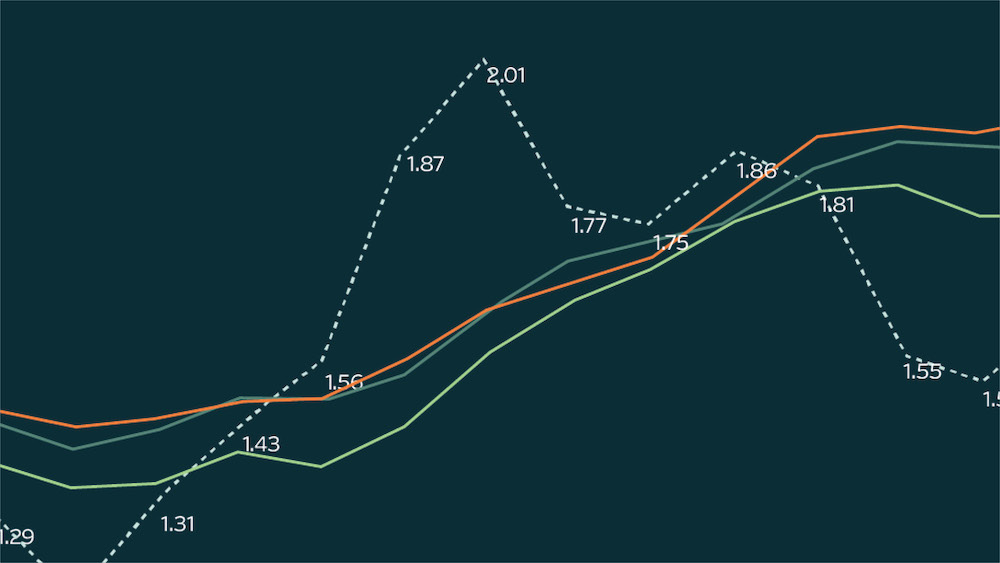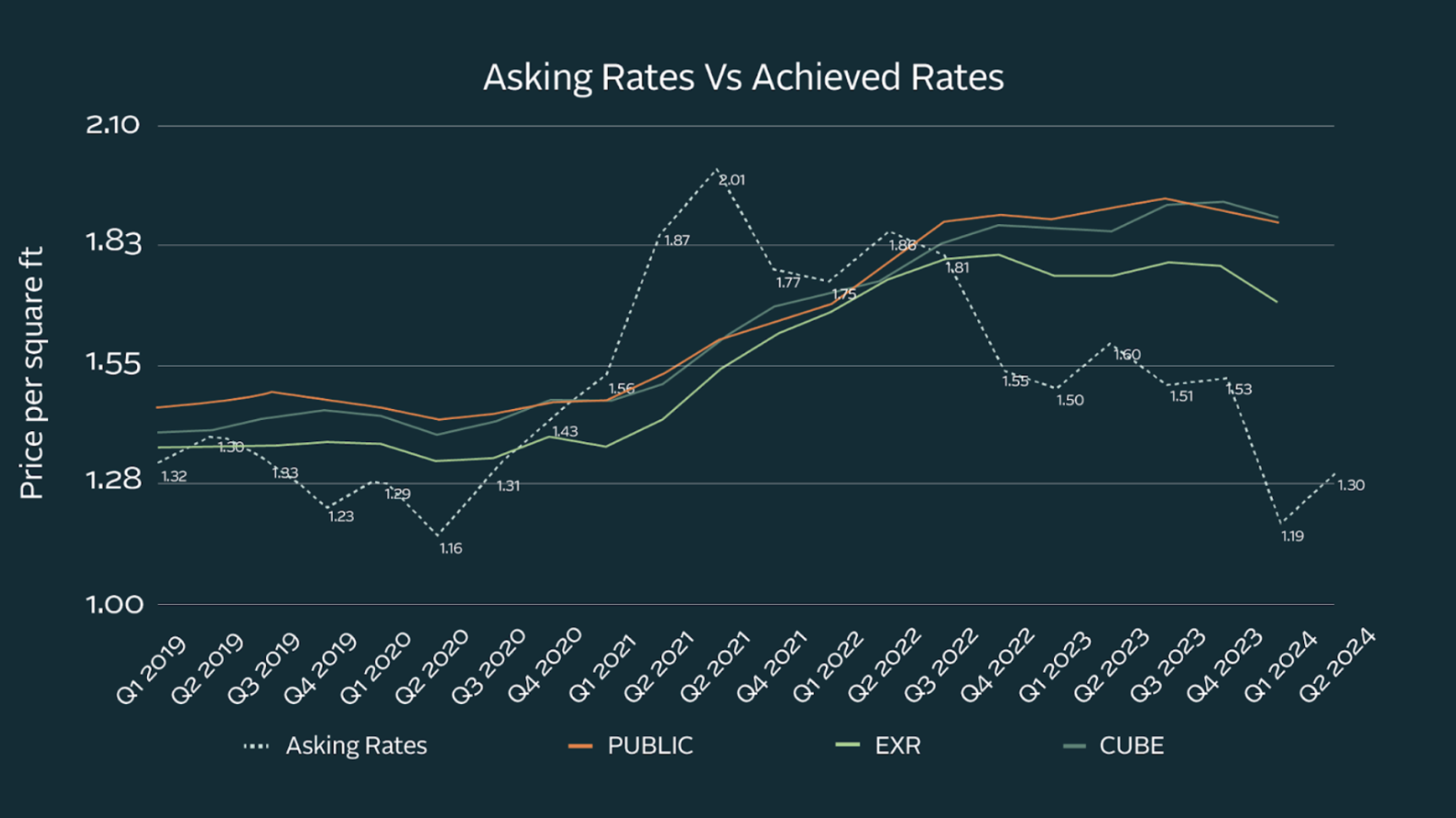
16 Jul 2024
One of the most widely discussed topics in the industry right now is the large gap between asking rates being advertised by the REITs and the achieved rates their stores are producing. While asking rates have cooled off dramatically from the 2021 all time highs we’re seeing that the achieved rates are still staying strong.
Asking Rates: $1.32
PUBLIC: $1.45
EXR: $1.36
CUBE: $1.40
Asking Rates: $1.19
PUBLIC: $1.88
EXR: $1.70
CUBE: $1.89
Asking Rates: -9.84%
PUBLIC: +29.67%
EXR: +25%
CUBE: +35%
It is great to see that in place rates have continued to grow over time despite what is happening with asking rates lowering. This is driven by the REITs heavy use of ECRI’s (Existing Customer Rate Increases) where a facility will advertise an lower price tag on a unit just to drive occupancy, and then drive up the cost of the unit over time at an accelerated rate than what we have seen revenue management strategies employ in the past.
The outcome of this new revenue management strategy is still to be determined, but the effects of it on the industry have been made clear. Forecasting where rates will go in a market seems to be nearly impossible now, as the rates being advertised by REIT owned/operated facilities have become increasingly volatile. It is unclear to me if a facility that employs this aggressive ECRI model will stabilize its in place rates within the 36 month timeline that is usually applied to Class A facilities, even if its physical occupancy is stabilized (85%+ physically occupied).
Will tenants be more likely to move out when getting their monthly fees increased at a higher velocity? Will they be less likely to rent a Self Storage unit in the future if they moved out due to getting their rent increased? Or will there be minimal impact on the consumer and this becomes the new norm.
The REITs have demonstrated that they can drive revenue across their portfolio using this model but whether this will be a sustainable practice? Only time will tell.

Details on the data used: